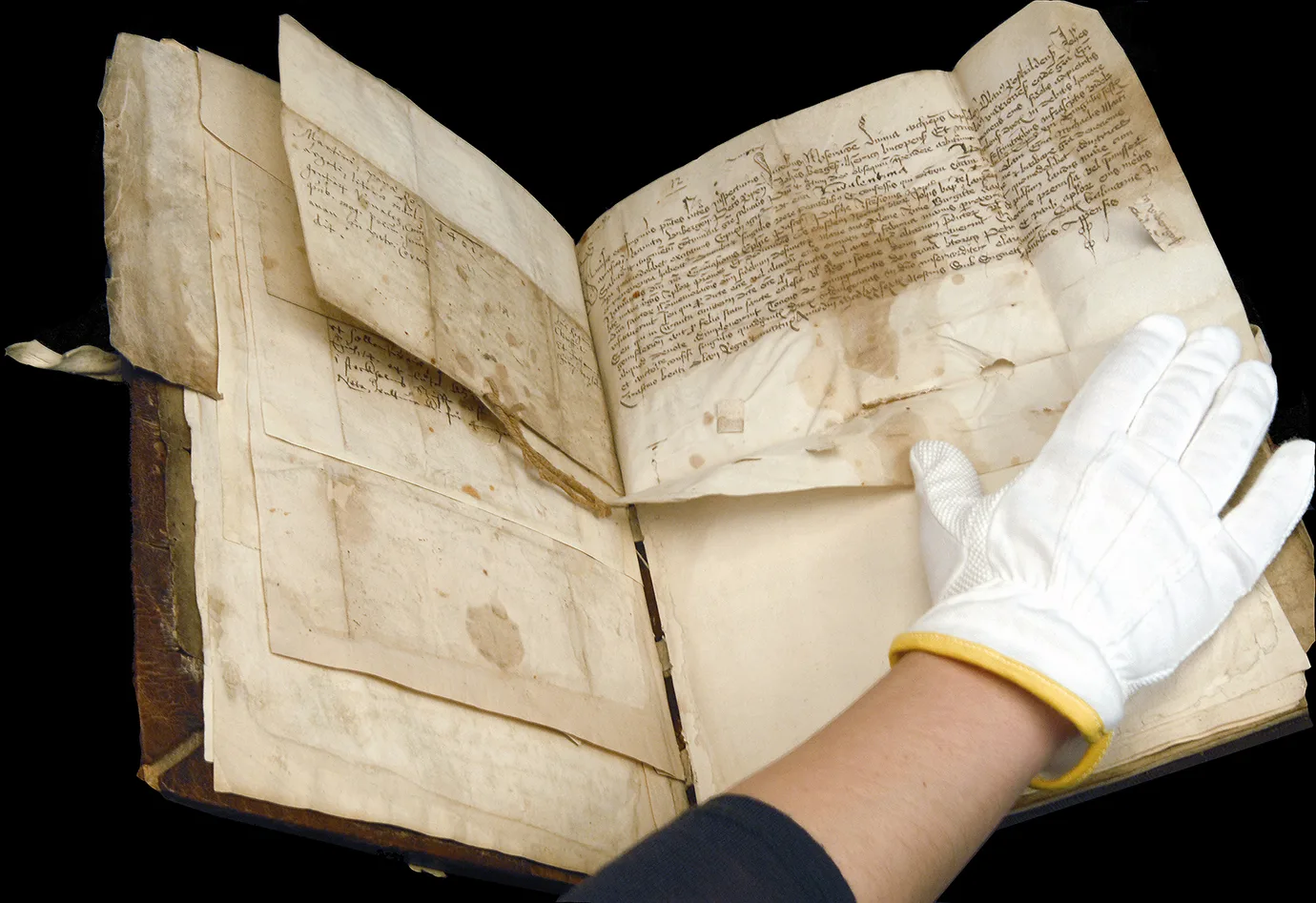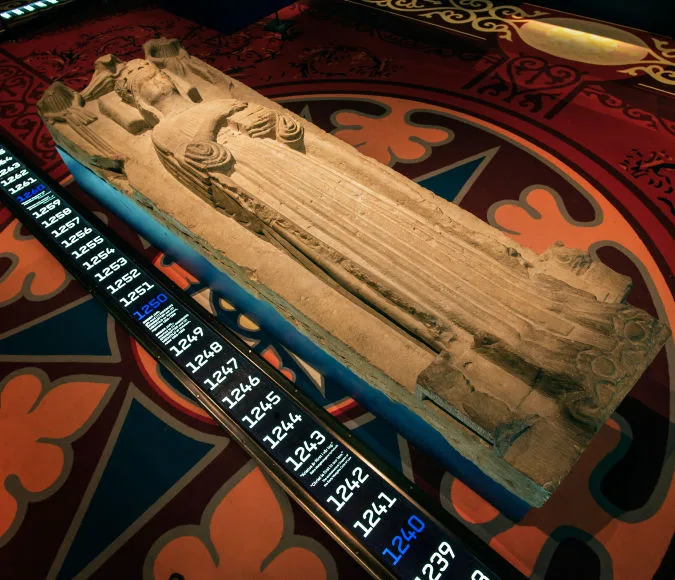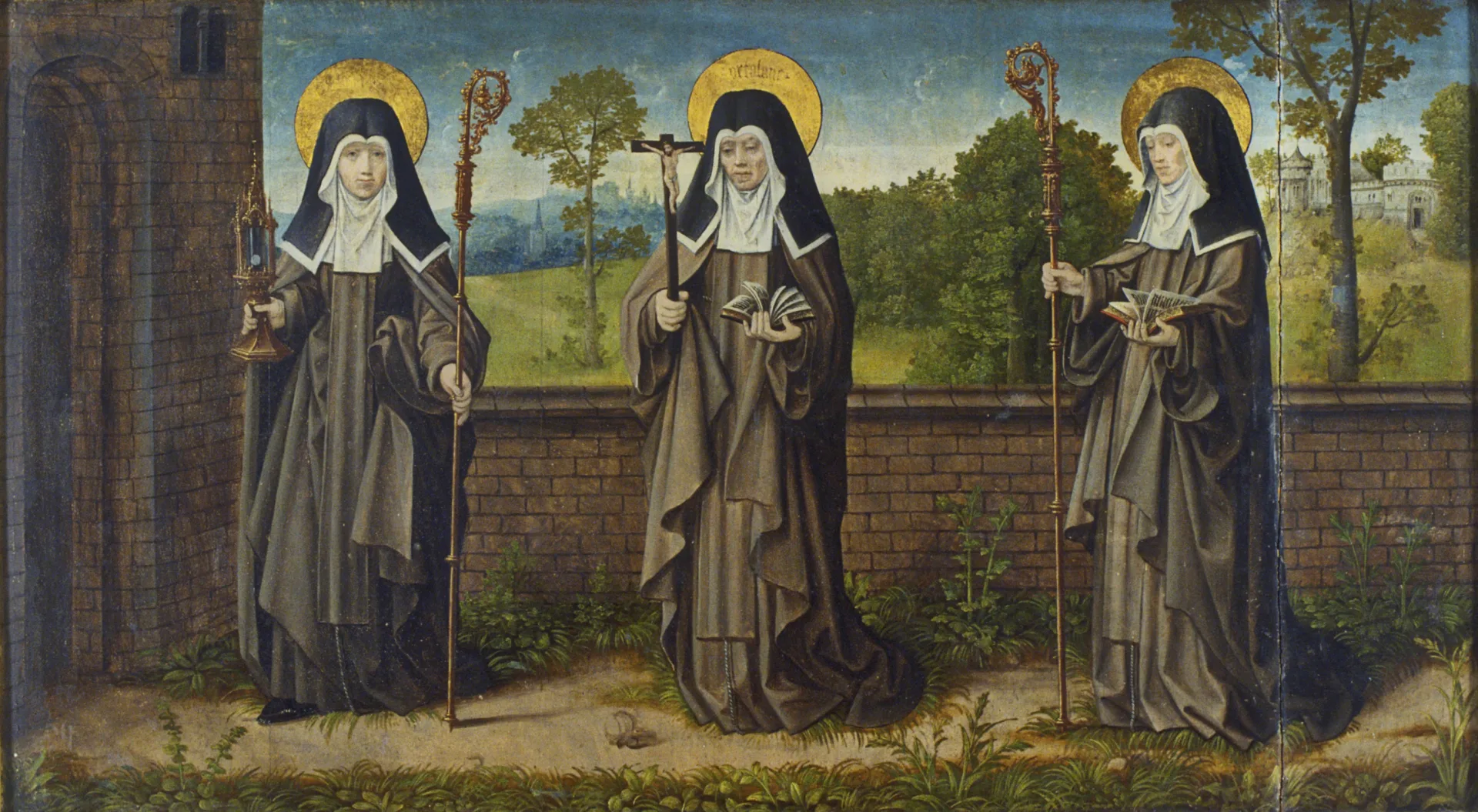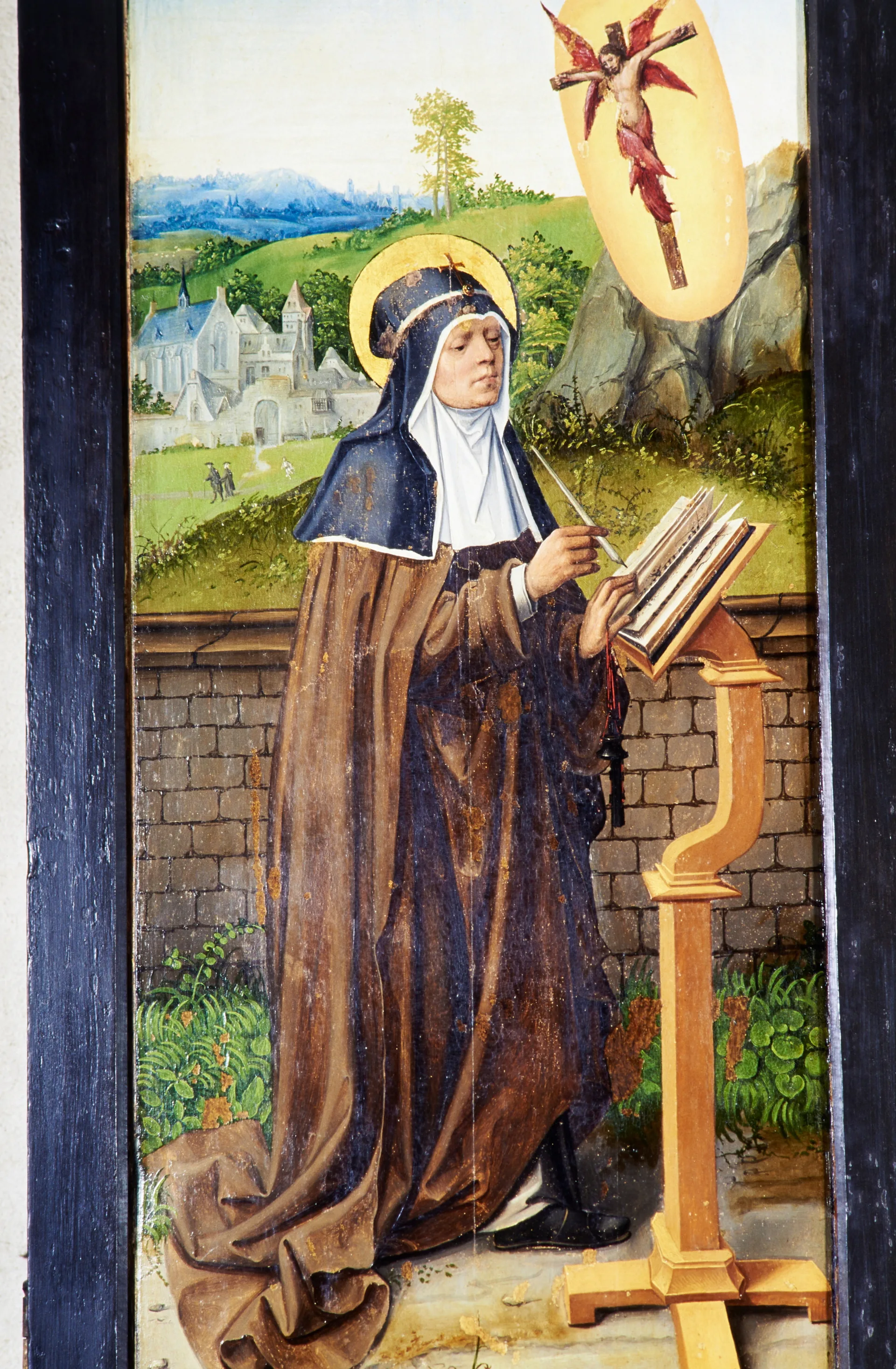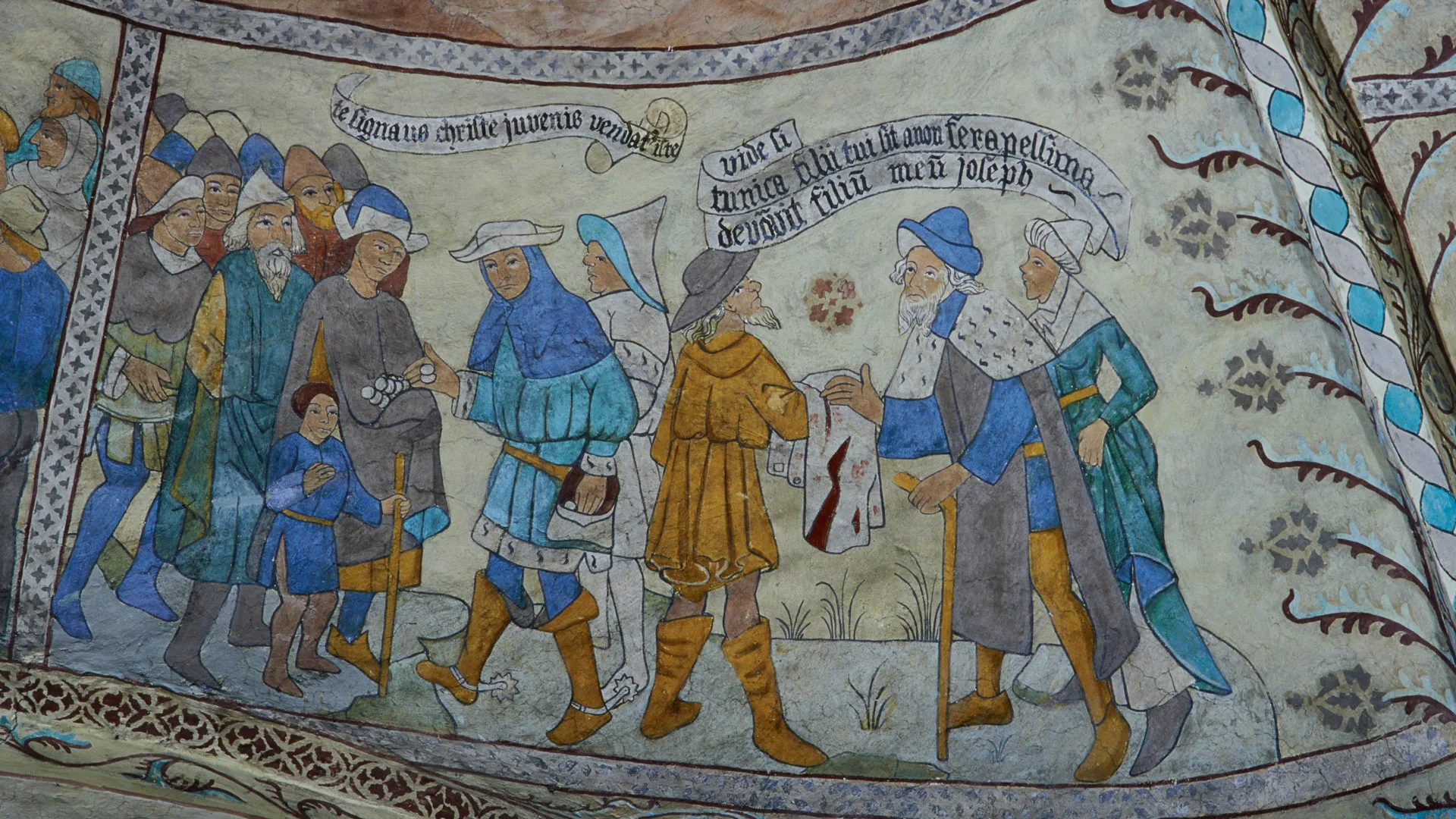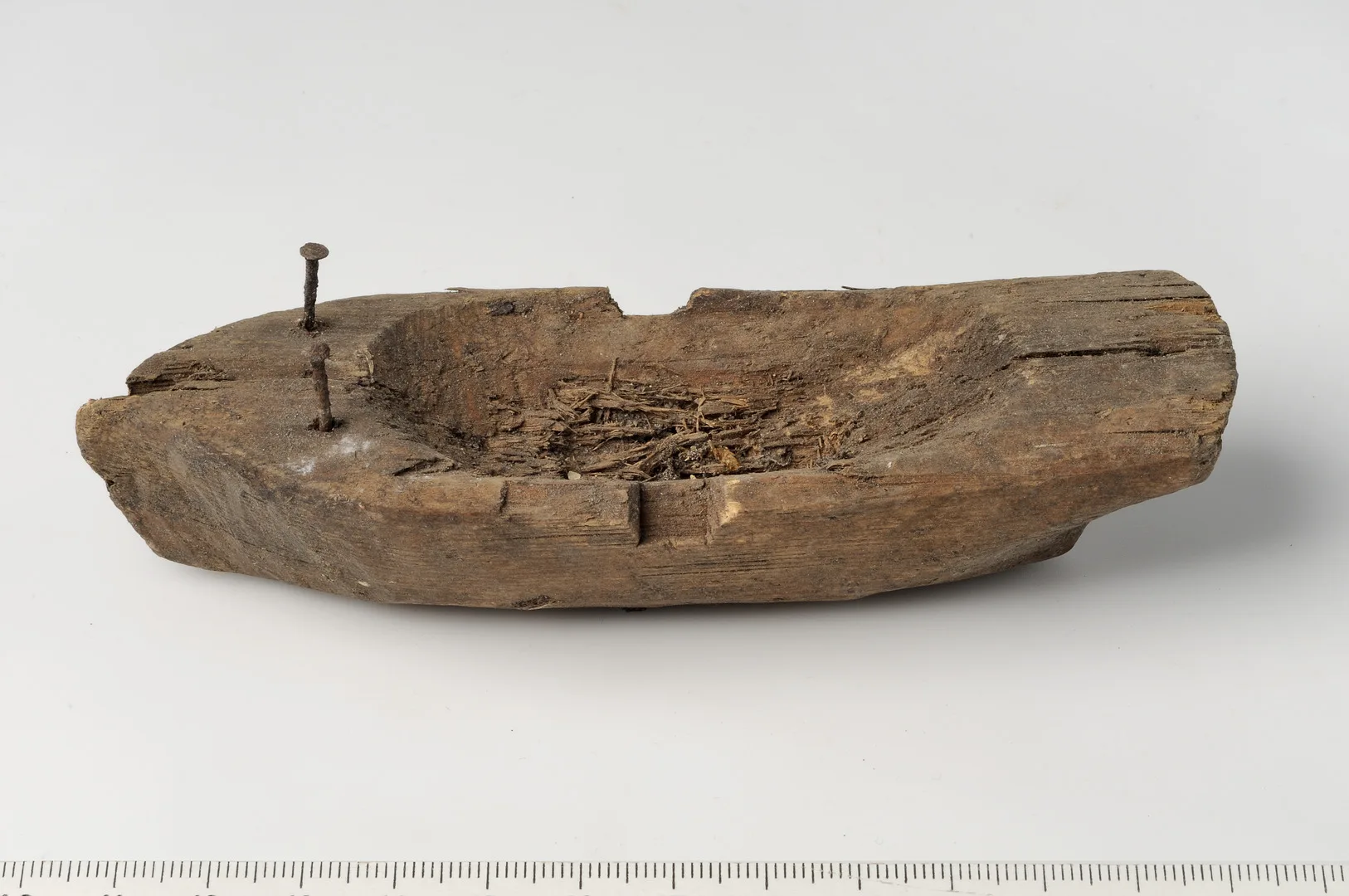Women in the Middle Ages
Viking Age
AD 800 – AD 1100
Middle Ages
AD 1050 – AD 1520
Modern Age
AD 1520 – AD 2025
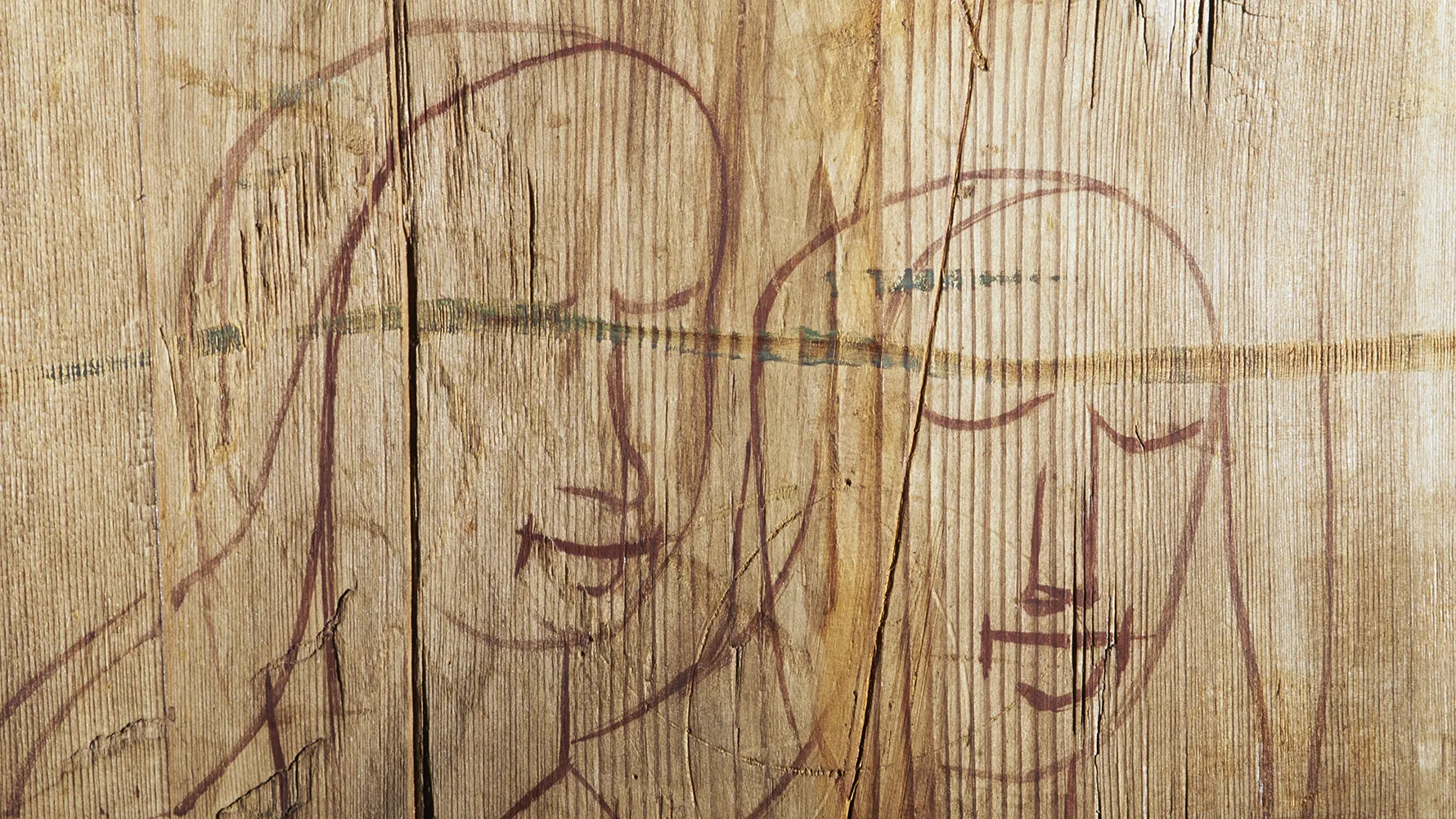
Women were dependent on male relatives or their husbands. Despite this, it was possible for women to attain positions of power, and some of the most influential people of the Middle Ages were women, such as Queen Margaret and Saint Bridget.
During the Middle Ages, there were legal differences between men and women. At the beginning of the period, women could not inherit. This changed later, and several women inherited houses and land. These women could then gain the same power as men.
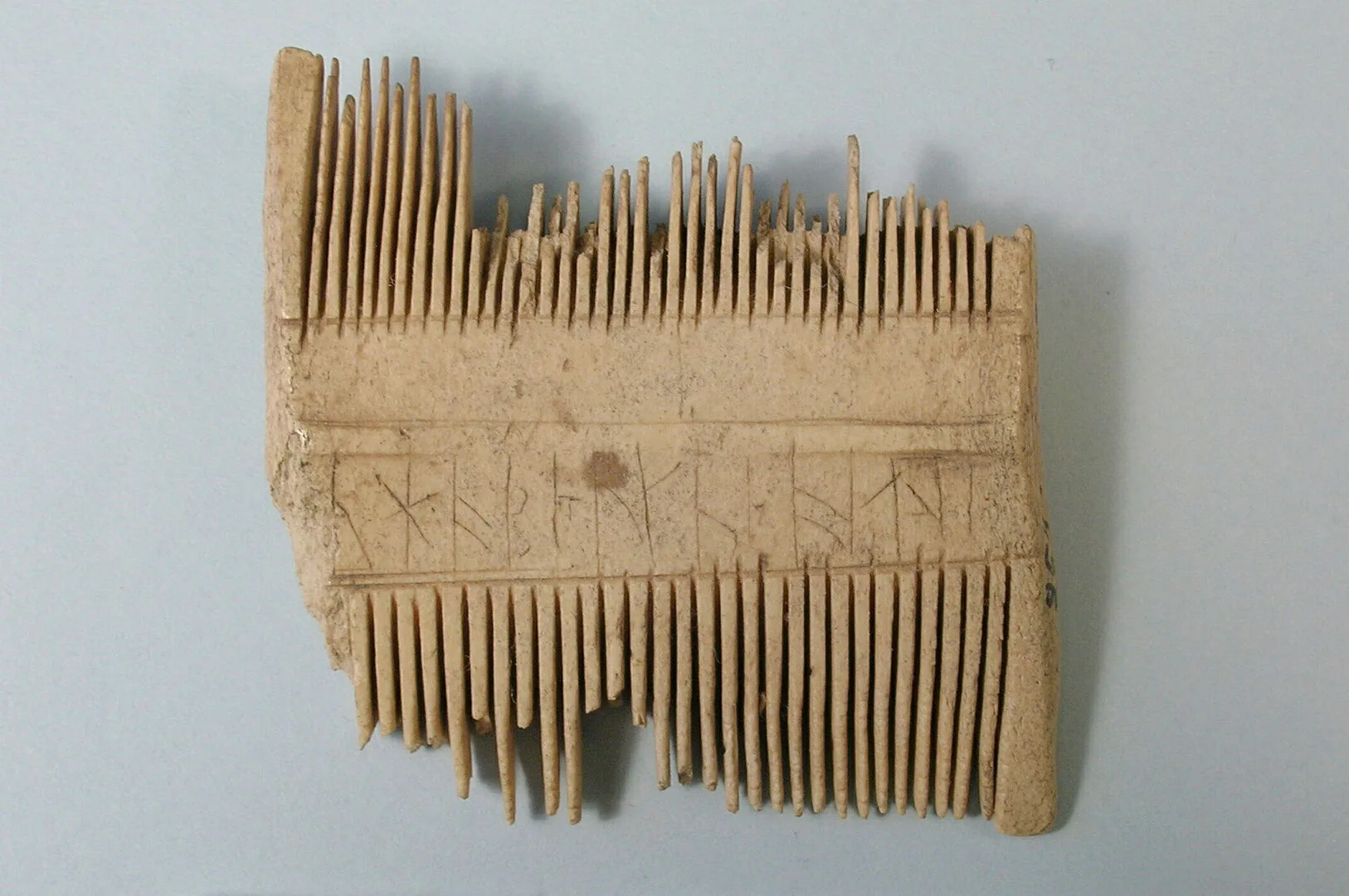
Double comb with runic inscription
Horn comb from the Middle Ages
In the church, there was a contradictory view of women. The holy Virgin Mary, mother of Jesus, was venerated. But women were also believed to be the source of sin through Eve, who tricked Adam into eating the apple that led to humanity being expelled from paradise. The idea that sin had a female origin in the Middle Ages is shown by depictions of the serpent in paradise often having a female face, such as in the fresco from Roslagsbro Church.
Home and children
Since women often helped in their husband’s work, whether in craft or running a farm, they also gained knowledge in these areas. If a woman became a widow, she could often take over and manage the business with the help of her children and any apprentices. Widows could continue to live independently without remarrying. Men, on the other hand, rarely mastered women’s tasks to the same extent.

Three-legged pot with handle
Medieval society was built around family or kinship. It was important who one was related to. Marriages were decided by the family. An unmarried woman needed permission from her father, eldest brother, or closest male relative to marry. For a married woman, her husband was her guardian. Only a widow could marry without consulting anyone; she made her own decisions.
The development of medieval provincial and national laws shows that women’s legal protection increased. There is too little information about Viking and medieval society to determine if this led to an improvement; what seems certain is that women’s living conditions changed.
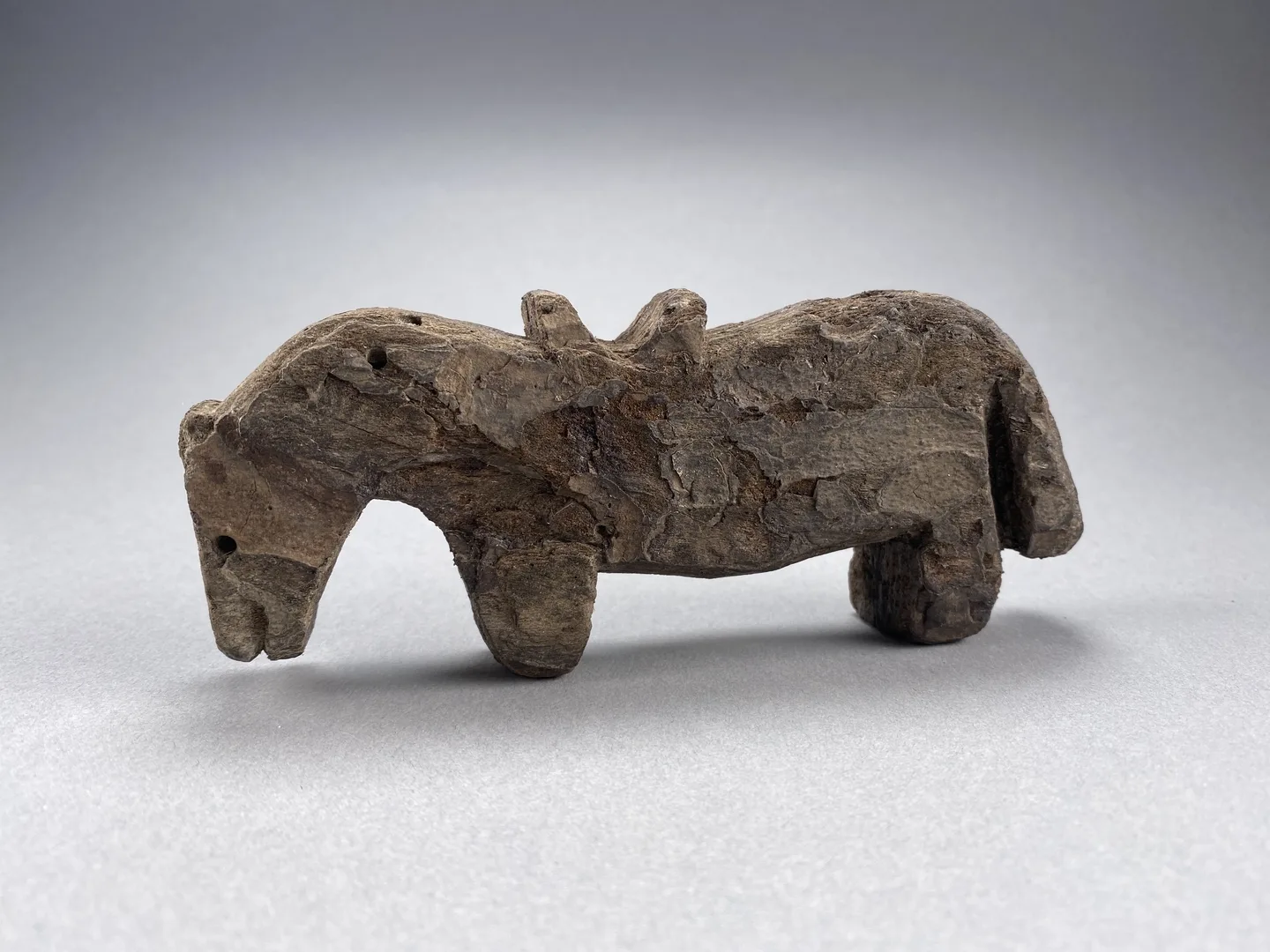
Toy horse
A woman’s role
Being a mother in the Middle Ages was very different from today. There were no contraceptives, so many women gave birth to many children. Natural methods of spacing children, such as prolonged breastfeeding, were relied upon. Every childbirth was risky for both mother and child. Many children died in their early years. Even when pregnancy and birth went well, it was physically demanding to give birth to and care for so many children.
Having several children was important in all families. Children eventually provided labor on the farm or in the workshop. In noble families, the family line continued through the children. In marriages where no children were born, it was often especially difficult for the woman. Women also managed the household. Their knowledge was crucial for the farm’s survival. They were fully responsible when the husband was away on business or at war.
The monastery as a sanctuary
Many women chose to enter convents in the Middle Ages. Young girls could learn to read and write there before becoming nuns. Women in convents were relatively independent. They did not depend on a man in the same way and avoided the risks of pregnancy and childbirth. They also had good material conditions and were well regarded in society.
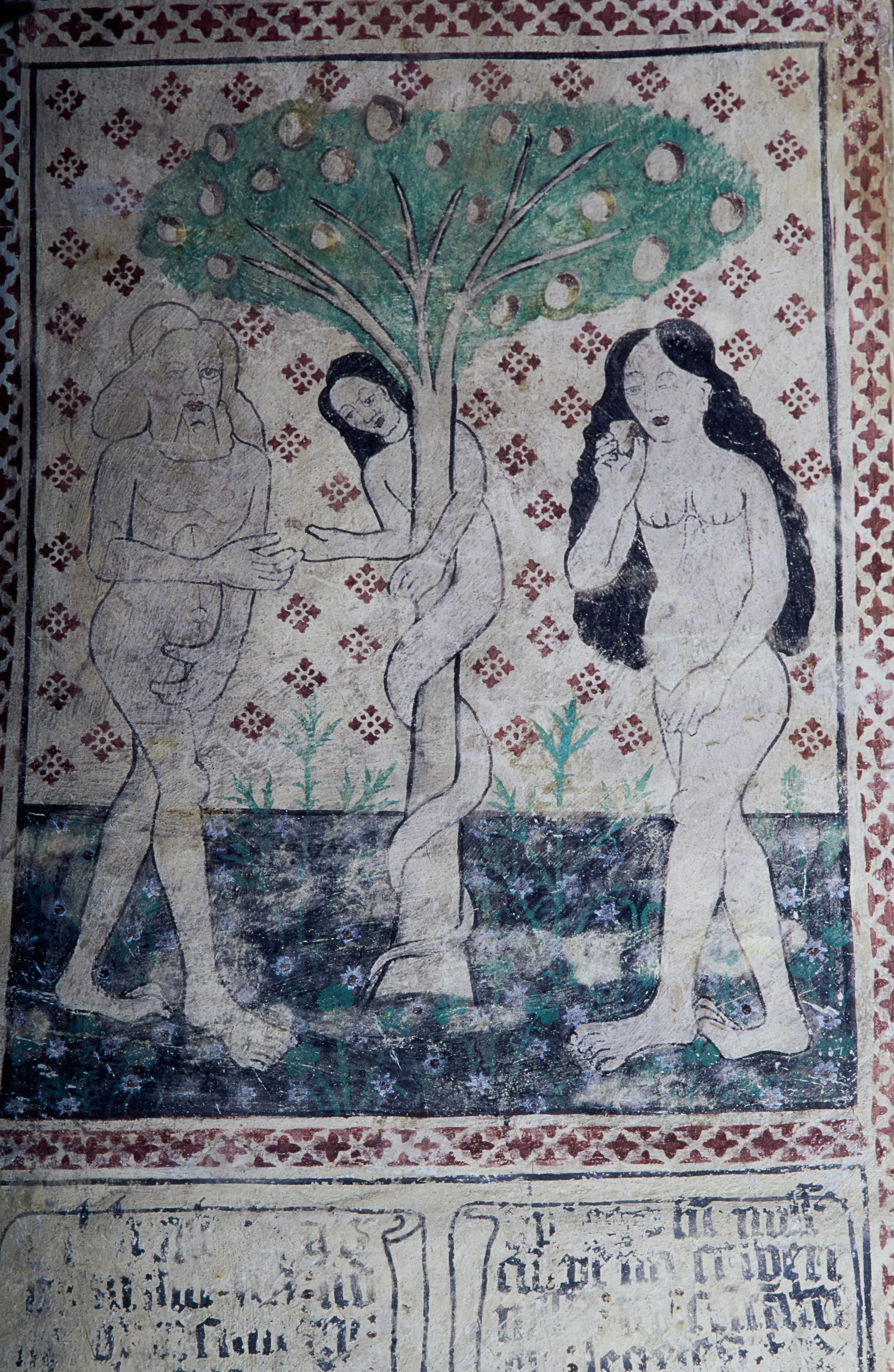
View of women
In the church, there was a contradictory view of women. The holy Virgin Mary, mother of Jesus, was venerated. But women were also believed to be the source of sin through Eve, who tricked Adam into eating the apple that led to humanity being expelled from paradise. The idea that sin had a female origin in the Middle Ages is shown by depictions of the serpent in paradise often having a female face, such as in the fresco from Roslagsbro Church.
